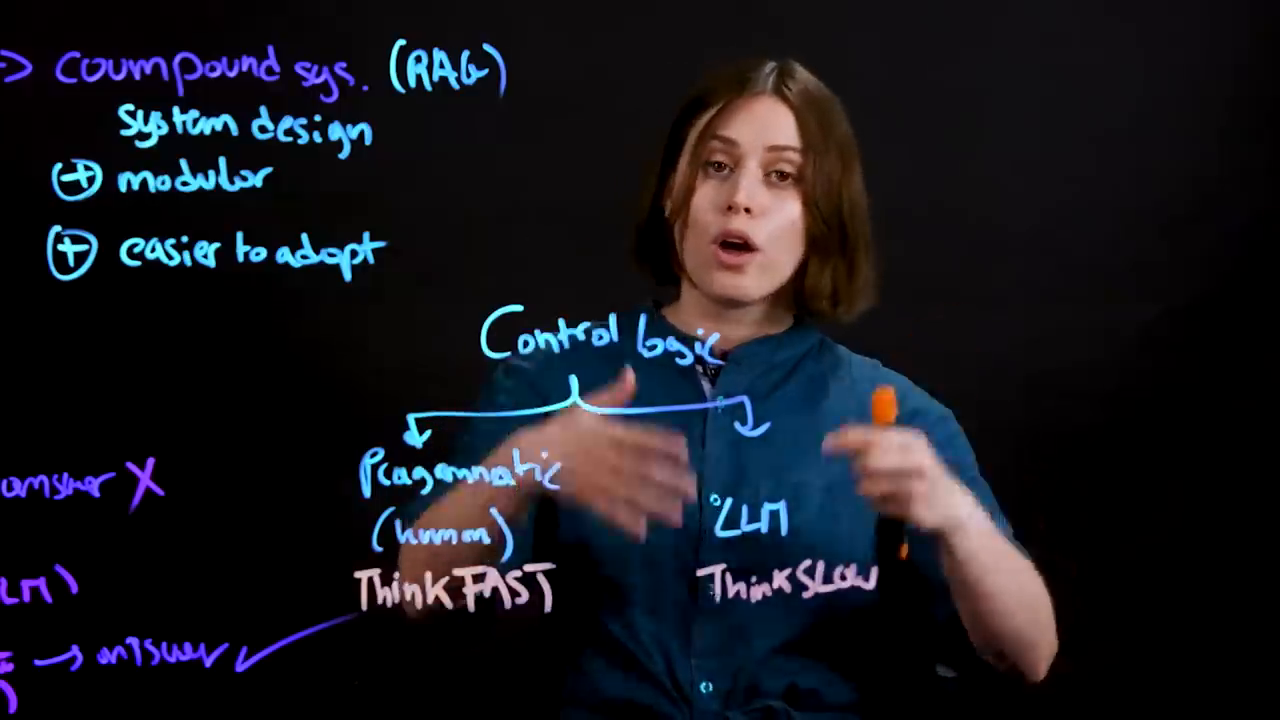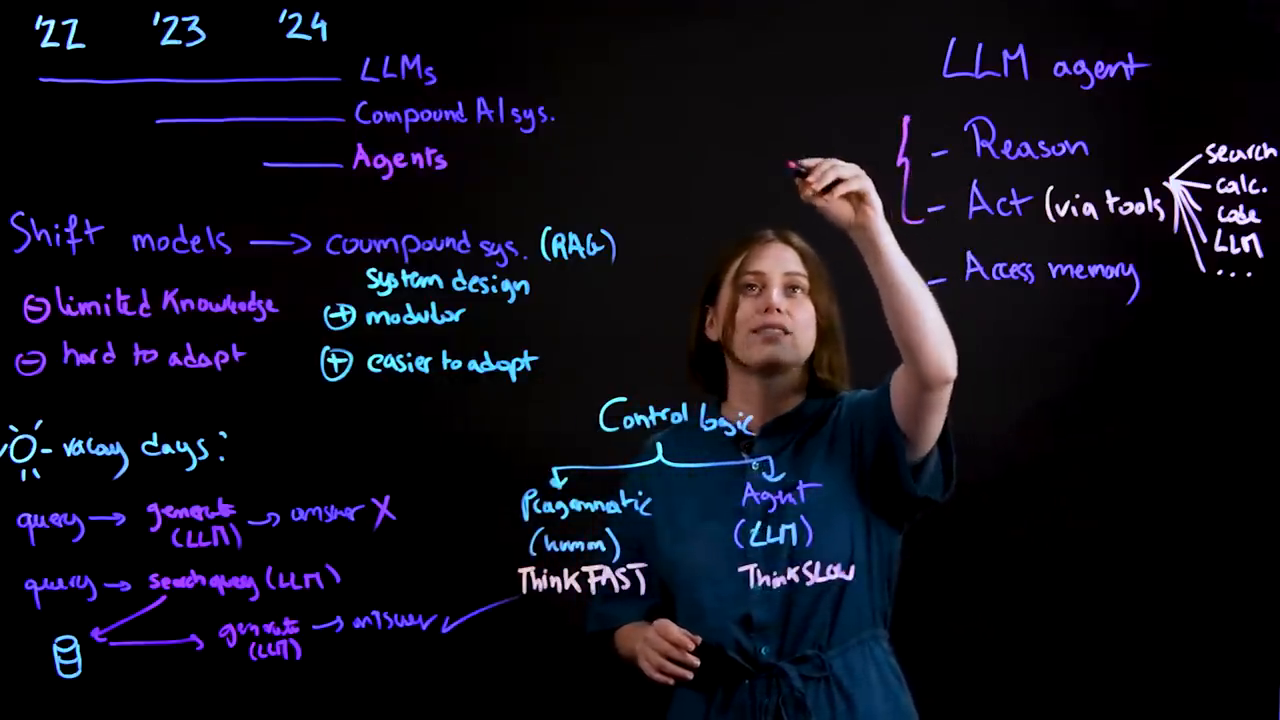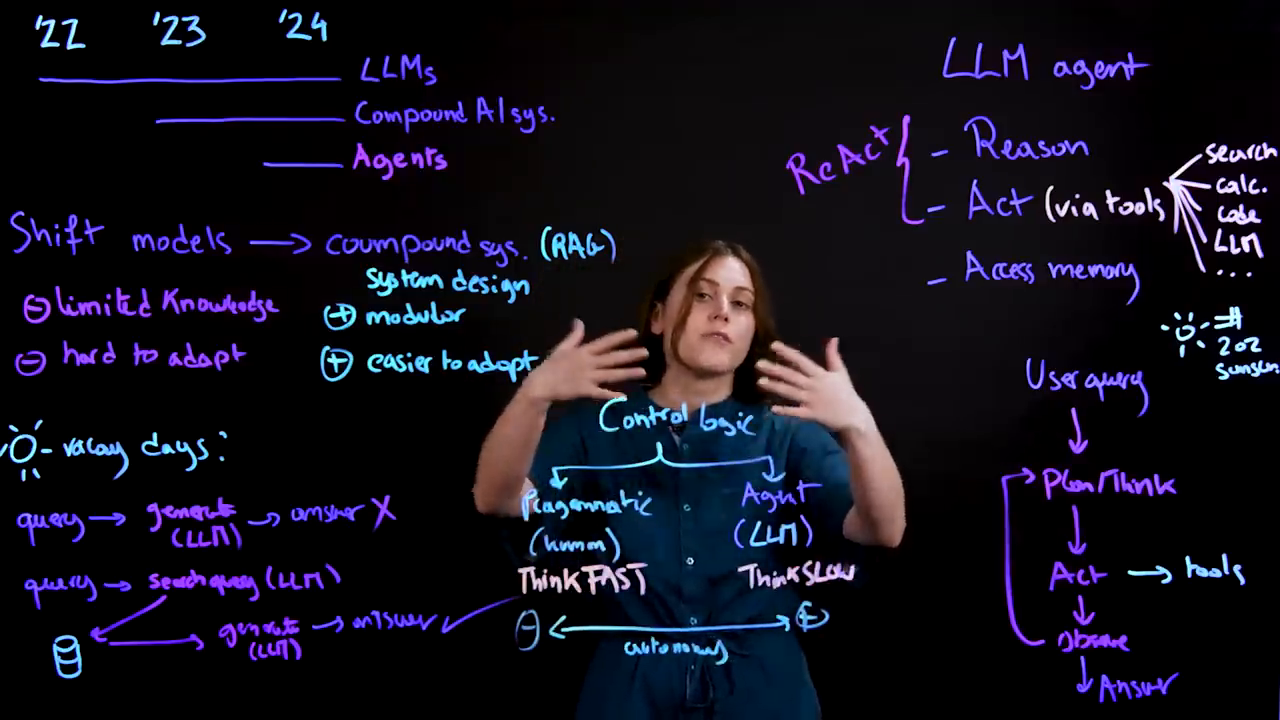The future of AI: Exploring AI agents and their transformative potential
As we step into 2024, it becomes clear that artificial intelligence (AI) is no longer an emerging technology but a central force driving innovation. One of the most significant trends expected to shape the year is the rise of AI agents. But what exactly are AI agents, and how are they reshaping the field of generative AI? Let’s dive deep into the evolution of AI models, the concept of compound AI systems, and finally, the transformative role of AI agents.
The evolution of generative AI: From monolithic models to compound AI systems

AI agents are poised to become one of the defining technologies of the years to come
The field of generative AI has been evolving rapidly, with one of the most substantial shifts being a move from monolithic models to compound AI systems.
Monolithic models, while capable of performing various tasks such as text generation, summarization, and first drafts of emails, are inherently limited. They rely entirely on their training data, which restricts their ability to solve problems requiring external information or customization.
For instance, imagine you want to plan a vacation and need to know how many days of leave you have left. If you ask a monolithic model this question, it will likely provide an incorrect answer because it does not have access to personal or contextual data. Moreover, adapting such models requires significant resources, including time, computation, and large amounts of data for fine-tuning.
On the other hand, compound AI systems represent an entirely new paradigm. A compound AI system integrates multiple components, including AI models, databases, and additional tools, to address complex queries. This integration allows the system to adapt and provide accurate answers to specific problems.
For example, in the vacation planning scenario, a compound AI system might access a database with your leave balance, generate a query to retrieve this information, and then provide an appropriate response. By designing the system with modular components, developers can provide more accurate and personalized solutions, addressing the limitations of monolithic models.
Compound AI systems: The power of system design

Compound AI systems leverage modularity to improve efficiency and adaptability
Compound AI systems bring the principles of system design into play, recognizing that some problems are better solved with a structured, modular approach.
- Modularity: Systems are inherently modular, meaning developers can choose from various models, such as language models, image-generation models, and other tools, tailoring them to specific use cases.
- Programmatic components: Alongside AI models, compound systems incorporate external tools like databases, output verifiers, and more. For instance, programs can verify the correctness of an output or break down complex queries to increase accuracy.
- Efficiency: By relying on these elements, compound systems minimize the need for labor-intensive fine-tuning of large-scale models, enabling faster implementation and adaptation for specific scenarios.
Let’s take a familiar example, like organizing a Florida vacation. If I need to calculate the number of sunscreen bottles required for my trip, a compound AI system might break down my query into steps:
- Retrieve leave data from my company database.
- Check the weather forecast in Florida for the coming month.
- Look up public health recommendations for sunscreen usage.
- Calculate how many 2-ounce sunscreen bottles will suffice for the trip.
Such systems can solve not only well-defined tasks but also more complex, multi-step problems, thanks to their modular design.
Enter the AI agents: Transforming control logic with intelligence

AI agents take compound systems to the next level, adding decision-making intelligence
While programmatic control logic has traditionally governed compound AI systems, AI agents add a new layer of intelligence. The concept involves placing the large language model (LLM) at the core of system decision-making.
Unlike programmatic approaches—which follow predefined rules—AI agents leverage the reasoning capabilities of LLMs. This allows them to:
- Break down complex queries: The model can analyze a problem, creating a logical plan to solve it in a step-by-step manner.
- Adjust in real-time: Rather than sticking to rigid instructions, AI agents can evaluate their progress, seek external data, iterate on plans, and even reassess strategies when faced with unexpected challenges.
This "agentic approach" lets the model think, plan, and act intelligently, offering a stark improvement over traditional control logic.
Key capabilities of AI agents

AI agents bring reasoning, action, and memory into the equation for superior results
AI agents possess three standout features, setting them apart from traditional compound AI systems:
1. Reasoning
AI agents are built to "think slow." Instead of generating the first answer that comes to mind, they evaluate queries carefully, developing plans and reasoning through multiple steps. This reasoning capability makes them ideal for solving highly complex or nuanced problems.
2. Action
To execute their decisions, AI agents utilize external tools (also called "actions"). For example, a tool could involve searching the internet, querying a database, performing calculations with a calculator, or interacting with APIs. The model determines when and how to call these tools, making the problem-solving process more dynamic and efficient.
3. Memory
Memory in AI agents serves both short-term and long-term functions. It allows them to:
- Store "inner thoughts" (e.g., logs of their reasoning process).
- Remember past interactions with the user, leading to more personalized experiences.
Memory enhances the agent’s capacity to solve repetitive or related tasks without requiring reconfiguration.
Case study: The REACT framework for AI agents

The REACT framework integrates reasoning and action seamlessly into LLM agents
One of the most popular configurations for AI agents is the REACT framework, which combines the reasoning and action aspects of the model. Here’s how it works, step by step:
- User query: The user inputs a query, which is then processed by the LLM agent.
- Planning: The LLM analyzes the query and creates a reasoning-driven plan.
- Action execution: Based on the plan, the agent decides whether to use external tools or memory to retrieve data, calculate results, or process information.
- Observation and iteration: If the initial attempt doesn’t resolve the query, the agent adjusts its strategy and iterates.
- Final resolution: The query is answered with precision after the model has critically assessed and refined its approach.
As an example, let’s revisit the sunscreen problem from the previous section. Using the REACT framework, an agent would:
- Retrieve my vacation leave data.
- Search weather forecasts for Florida.
- Access health data on sunscreen usage.
- Calculate the number of sunscreen bottles needed, iterating through tools and memory as necessary.
The REACT framework ensures that AI agents don’t rush into instantaneous answers but instead focus on accuracy and thorough problem-solving.
Narrow vs. agentic systems: Finding the balance

Choosing between narrow systems and agentic approaches depends on the task at hand
The choice between programmatic, narrow systems and agentic approaches ultimately depends on the complexity of the task:
- Narrow problems: For well-defined, repetitive tasks (e.g., vacation leave queries), programmatic systems are more efficient. They deliver results quickly without requiring iteration.
- Complex problems: For tasks requiring creativity, research, or cross-domain expertise (e.g., solving GitHub issues), agentic systems shine due to their adaptability and reasoning capabilities.
Conclusion: AI agents and the future of generative AI
As generative AI continues to evolve, compound AI systems and AI agents are set to redefine what AI can achieve. By combining modularity, intelligence, and adaptability, these technologies empower users to solve more complex and dynamic problems than ever before.
While compound AI systems provide solid frameworks, AI agents represent the next step in AI evolution. They bring autonomy, reasoning, and problem-solving expertise, making them indispensable in scenarios that demand adaptability. As we move forward, the integration of system design with agentic behavior will undoubtedly unlock unprecedented potential in AI.
The future is bright, and with AI agents leading the charge, the possibilities are limitless! Subscribe to stay updated with this exciting journey into 2024 and beyond.
